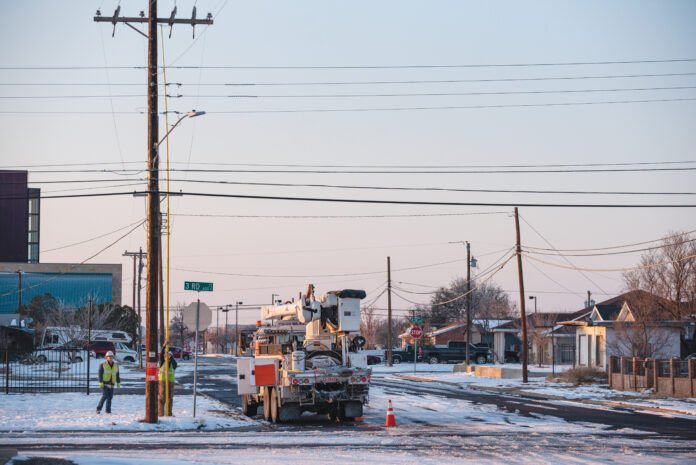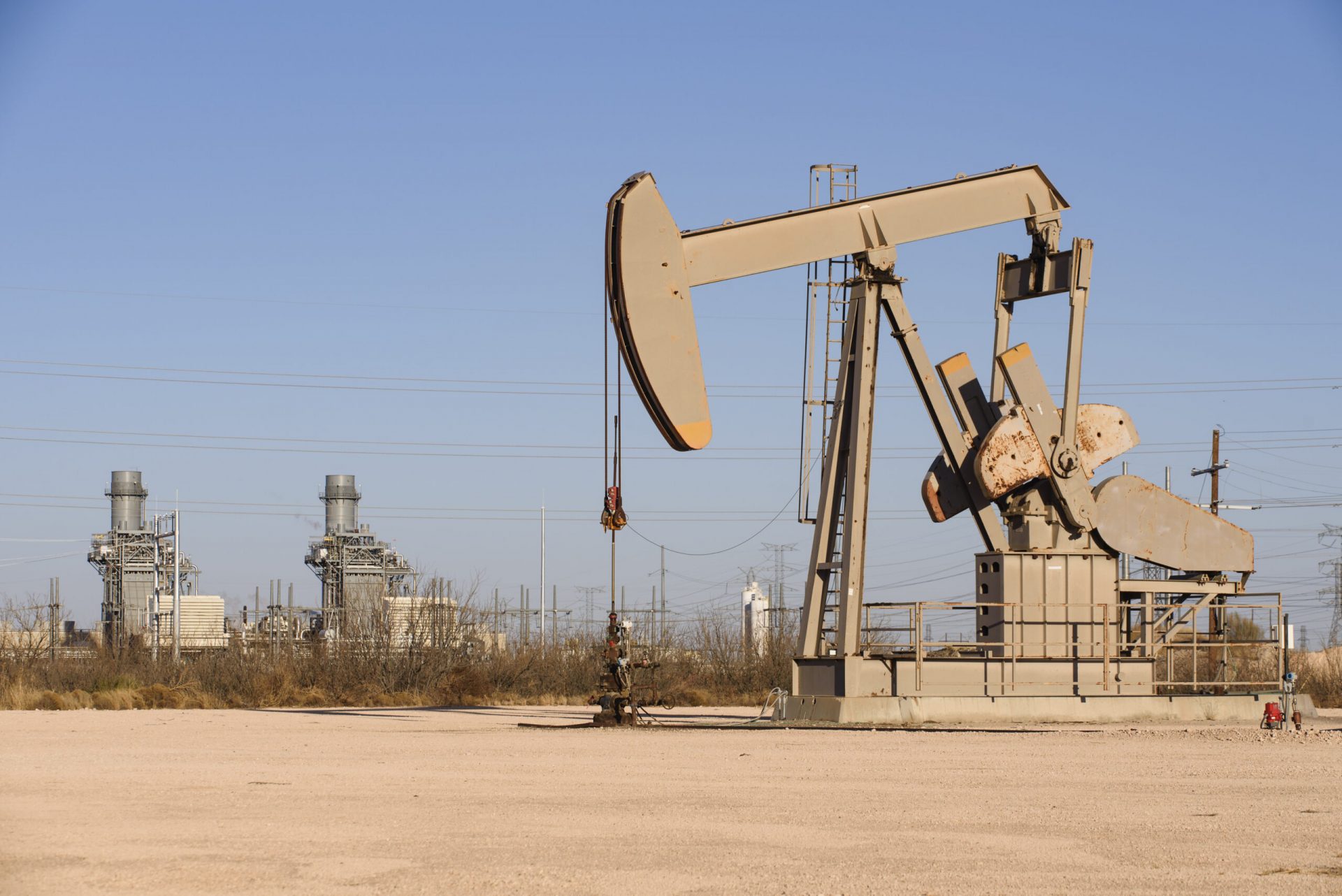
Winter Storm Heather put Texas’ power grid to the test and the Permian Basin Petroleum Association, State Rep. Brooks Landgraf and the Texas Independent Producers & Royalty Owners and Texas Pipeline associations are gratified that it passed.
Rated the third coldest onslaught in recent state history behind Winter Storms Uri in February 2021 and Elliott in December 2022, Heather’s peak power surge of 78,138 megawatts surpassed Uri’s 69,812 when outages caused 246 deaths in Texas and left hundreds of thousands shivering in the dark.
“There is no question that efforts to ensure reliable electric supply are vital for Texans,” PBPA President Ben Shepperd said. “There is also no question that PBPA members are committed to doing our part to ensure robust natural gas production.
“To that end, natural gas was the largest percentage of the grid mix throughout this winter storm and that is surely because of the efforts that operators had undertaken to staff field assets in incredibly difficult times. PBPA members worked tirelessly in frigid temperatures so Texans across the state could be warm in their homes.”
Shepperd said all that work didn’t completely nullify the difficulties of the storm, which was extremely cold and windy with temperatures well below freezing, but thankfully absent Uri’s heavy snow and ice.
“Harsh winds did take down power lines and created localized outages that caused challenges including transporting natural gas,” he said. “Cold temperatures impacted public water systems and precipitation created logistical challenges and roadway hazards in some parts of the state.”
Shepperd said the efforts of the Texas Legislature and real time direction by the Railroad Commission of Texas, the Public Utilities Commission, the Texas Division of Emergency Management, the Texas Department of Transportation and the Office of the Governor worked together in the State Operations Center to prepare for, monitor and address the challenges.
“Our work with this season is not complete and we expect more winter storms on the horizon,” he said. “The PBPA is currently working with our members to assess issues that occurred and correct them.”
Landgraf, chairman of the Texas House Environmental Regulation Committee in Austin, said natural gas was key to handling Heather.
“Thankfully after the lessons learned from Uri and the resulting changes made by the Legislature, the grid was resilient and Texans were able to stay warm in their homes,” Landgraf said. “That was because the biggest lesson learned by many was something we already knew here in West Texas: natural gas is the most reliable energy source regardless of whether the sun is shining.
“That’s why I proudly voted for legislation in 2021 that required the weatherization of power generation facilities and ensured that power was prioritized for oil and natural gas field operations. There is no doubt these policy changes and the increased reliance on natural gas generation helped keep the lights on when demand peaked this winter.”
Landgraf said he was thereby not surprised that the grid held up.
“But that doesn’t mean I’m done fighting to ensure Texans have the world’s most reliable power grid,” he said. “During the most recent regular session I filed a bill to incentivize the construction of new dispatchable natural gas generation facilities and successfully fought to include provisions of that bill in other legislation that ultimately became law.
“The long-term fix for the grid is getting more natural gas generation facilities online and I look forward to seeing it through and continuing the fight when the Legislature reconvenes in 2025.”

TIPRO President Ed Longanecker credited legislative reforms, Gov. Greg Abbott and a strong commitment by operators.
“Natural gas deliveries played a dominant role,” Longanecker said from Austin. “In fact all thermal sources accounted for over 90 percent of electricity generation during peak demand, the majority of which was supplied from natural gas.
“The Electric Reliability Council of Texas experienced record-breaking demand with power surges reaching 78,138 megawatts and surpassing Winter Storm Uri’s record of 69,812 and Winter Storm Inga’s 65,915 in January 2018. To meet this spike Texas operators delivered over 11 billion cubic feet of natural gas while utilizing many proactive measures to mitigate weather-related risks.”
Longanecker said natural gas is the largest single source of power in Texas, accounting for 41.8 percent of the state’s electricity generating capacity.
“As increased instances of extreme weather conditions continue to strain intermittent energy sources alongside Texas’ growing population resulting in a 20-percent increase in energy demand by 2031, millions of Texans will depend on reliable natural gas generation and storage to ensure an uninterrupted power supply year-round,” he said. “The Texas Legislature’s work to strengthen our electric grid and increase dispatchable energy sources is a critically important start.
“However, effectively meeting growing energy demands will be a continued partnership between the oil and natural gas industry and Texas policy leaders to expand natural gas production, storage and transportation across the state.”
Texas Pipeline Association President Thure Cannon said pipelines have engaged in weatherization for over a decade.
“Mandating that other critical infrastructure do the same really makes all the difference and the enhanced communication and coordination has been crucial during emergency weather events among personnel at key state agencies such as TxDOT, the Texas Division of Emergency Management, the Railroad Commission of Texas and ERCOT,” Cannon said from Austin. “It is for all the above reasons that the State of Texas is better prepared than ever to handle such extreme weather events and why it performed so well recently.”
He said Texas natural gas “performed very strongly throughout Winter Storm Heather.
“On the evening of Jan. 16, for example, natural gas-fired generation provided as much as 71 percent of the state’s electricity generation,” Cannon said. “Even before Senate Bill 3 was passed during the 87th Legislative Session the Texas midstream industry was prepared for extreme cold.”
He said pipelines are naturally protected because they are buried underground and naturally insulated.
“With new thresholds of extreme weather being set in recent years the industry has taken additional measures to protect its above-ground assets,” Cannon said. “This includes hardening its facilities, implementing heat-tracing, applying heating elements and wraps to valves and controls, building more enclosures and windbreaks around controls and installing more back-up generators.
“The midstream industry will continue to work with regulators and legislators to further prepare for any possible future winter events and ensure the delivery of the hydrocarbons that Americans rely on every day such as crude oil, petroleum products and natural gas to Texas homes, businesses and power generators.”



